...to your whisky:
[A]dding water releases molecules that improve the flavor. Water and ethanol don’t make for a perfectly uniform mixture. Aromatic compounds could become trapped in ethanol clusters and never reach the surface. Our tongues are only capable of identifying the flavors, sweet, salty, sour, bitter, and umami (savory), so aroma is really important for detecting all the other flavors that connoisseurs appreciate in whiskey.
Guaiacol is what gives whiskey that smoky, spicy, peaty flavor. Chemically, guaiacol is similar to a lot of other whiskey aroma compounds like vanillin (with the scent of vanilla) and limonene (citrus). These and other flavor compounds are not attracted to water and are more likely to become trapped in ethanol clusters.
So, just add a couple of drops to your dram, especially if it's cask-strength. But start with good whisky; diluting crap won't improve it.
The organization will no longer defend armed hate groups:
The change in policy followed the ACLU of Virginia’s decision to file suit to ensure that an assortment of white supremacist groups could hold the now-notorious “Unite the Right” rally earlier this month in Charlottesville’s Emancipation Park. While the ACLU wasn’t responsible for the fatal violence that ensued, the entire organization was convulsed in the fallout. One ACLU of Virginia board member resigned in protest. In a historic gesture, three California affiliates broke with the Virginia branch and the national organization to condemn the lawsuit. “If white supremacists march into our towns armed to the teeth and with the intent to harm people, they are not engaging in activity protected by the United States Constitution,” they said.
In a statement to the New Republic, an ACLU spokesperson said the new policy will be applied on a “case by case” basis, meaning greater scrutiny will be applied to possible clients. “If we determine that any potential client intends to subvert their rights under the First Amendment to cause violence, we wouldn’t represent them. The First Amendment doesn’t protect violence, that hasn’t changed,” Noa Yachot said.
Interesting. And sad. But necessary.
I'm in Wildwood, Mo., where I saw my first total eclipse of the sun. It was well worth the trip. I'll have at least one photo when I'm back home tomorrow.
(We stayed an extra day because of traffic.)
...the United States launched a space probe that is now one of the three fastest-moving and farthest human-made objects in the universe.
Voyager 2 lifted off from Cape Canaveral, Florida, at 9:29 CDT on 20 August 1977. As of today it's about 115 AUs (1.72×1010 km) from Earth, moving about 15.4 km/s or 55,000 km/h away from the sun.
It's still alive. NASA expects the probe to continue transmitting from interstellar space for at least another 7 years, by which time it may be able to sample the interstellar medium itself.
Happy birthday, V'GER. We hope to see you again someday.
I'm heading to Missouri tomorrow to get into position for Monday's eclipse. Since Springfield is on the way, I spent the day at the Illinois State Fair. Again. So, naturally, we had to make a pilgrimage to the butter cow:
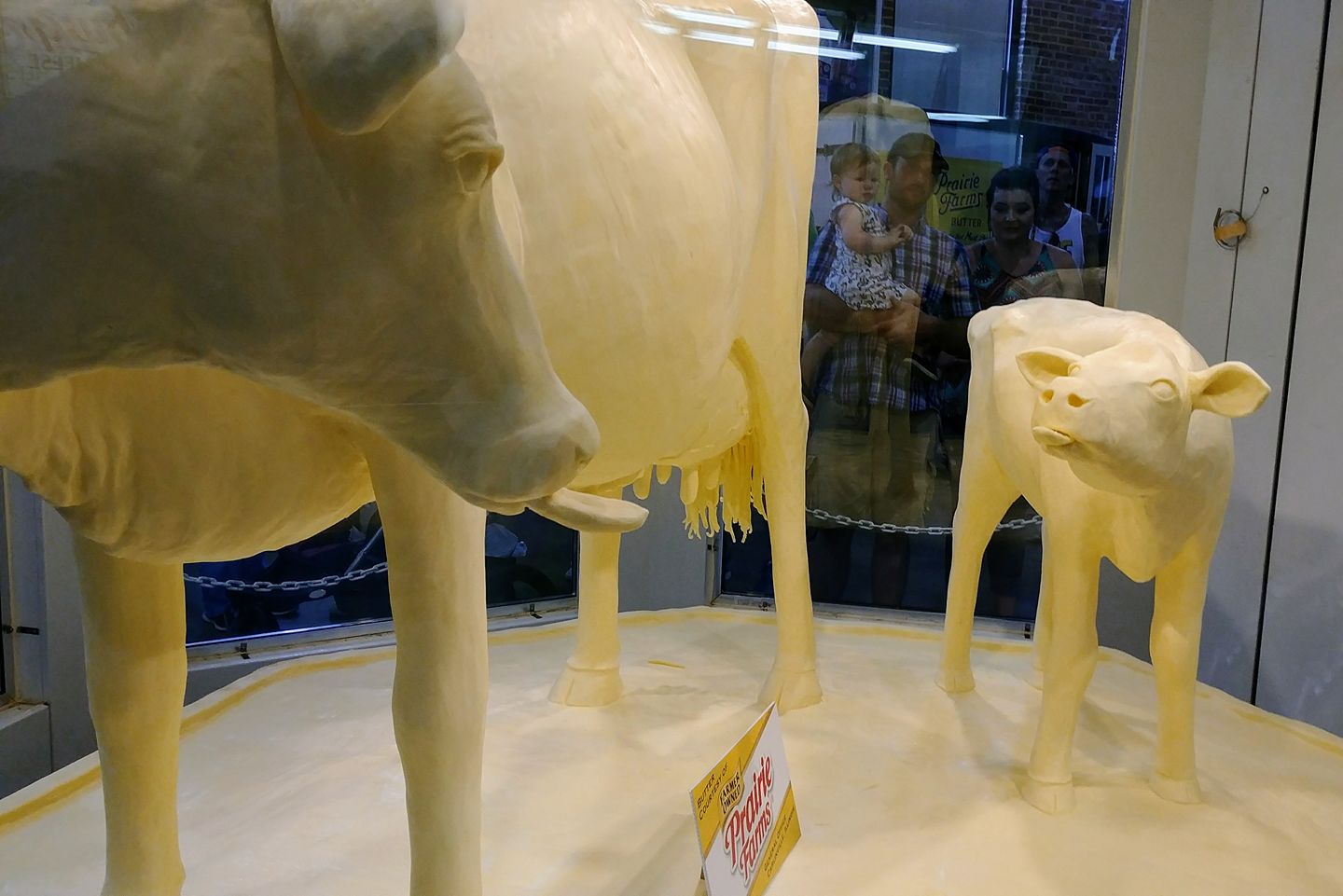
No idea what we're doing tomorrow, but Monday we'll be standing in a parking lot with our eclipse glasses on.
And sweating. It's warm out there.
Via Mother Jones, the Southern Poverty Law Center has published a report that examines the statues to Confederate heroes of the sort that sparked last weekend's violence in Charlottesville, Va. It should surprise no one with a modicum of historical knowledge that they went up during periods of exceptional violence against African-Americans:
[T]he argument that the Confederate flag and other displays represent “heritage, not hate” ignores the near-universal heritage of African Americans whose ancestors were enslaved by the millions in the South. It trivializes their pain, their history and their concerns about racism — whether it’s the racism of the past or that of today.
And it conceals the true history of the Confederate States of America and the seven decades of Jim Crow segregation and oppression that followed the Reconstruction era.
There were two major periods in which the dedication of Confederate monuments and other symbols spiked — the first two decades of the 20th century and during the civil rights movement.
Southerners began honoring the Confederacy with statues and other symbols almost immediately after the Civil War. The first Confederate Memorial Day, for example, was dreamed up by the wife of a Confederate soldier in 1866. That same year, Jefferson Davis laid the cornerstone of the Confederate Memorial Monument in a prominent spot on the state Capitol grounds in Montgomery, Alabama. There has been a steady stream of dedications in the 150 years since that time.
But two distinct periods saw a significant rise in the dedication of monuments and other symbols.
The first began around 1900, amid the period in which states were enacting Jim Crow laws to disenfranchise the newly freed African Americans and re-segregate society. This spike lasted well into the 1920s, a period that saw a dramatic resurgence of the Ku Klux Klan, which had been born in the immediate aftermath of the Civil War.
The second spike began in the early 1950s and lasted through the 1960s, as the civil rights movement led to a backlash among segregationists.
Mother Jones prepared this handy graph:
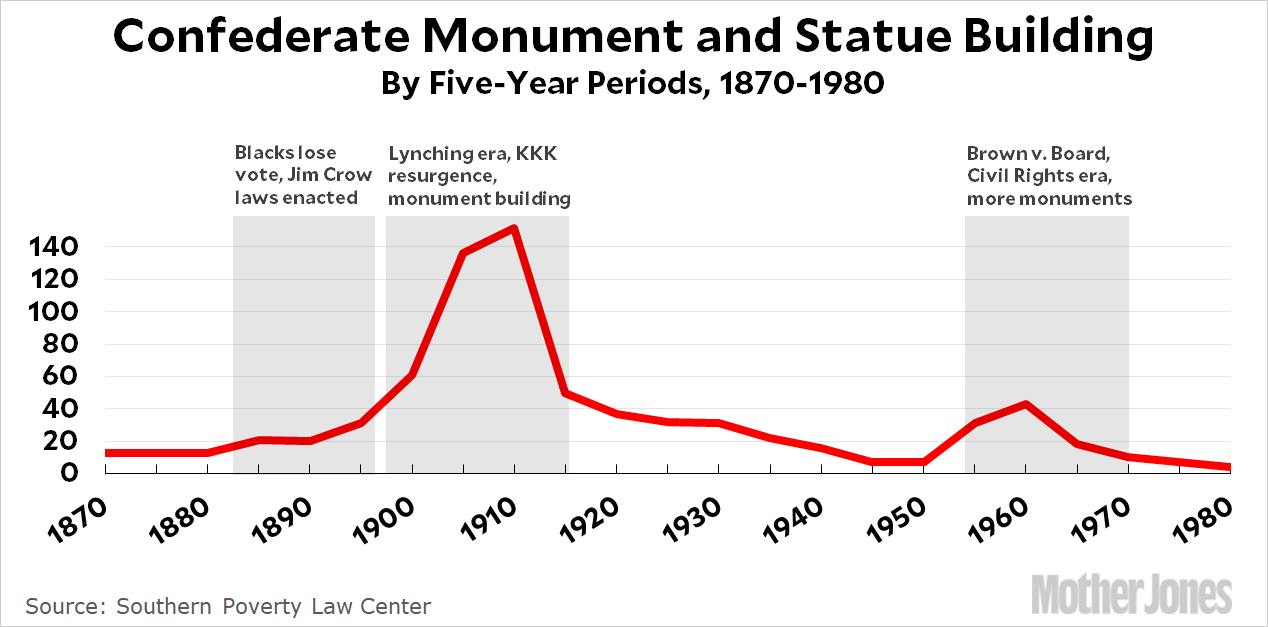
So, yes, these statues represent history: the history of Southern oppression of African-Americans throughout the Jim Crow era. Southern whites erected them as symbols of white supremacy and violence.
And they need to go away now.
Yesterday, a man reportedly threw himself in front of a CTA train at the Fullerton El stop, shutting down the three busiest lines in the system during the morning rush hour. Commuters faced hours-long delays and an already at-capacity bus system struggled to adapt to the demand.
So did Lyft and Uber, as people found out. Lyft presented one of my friends with a $75 fare to go six kilometers; she wound up taking a bus and suffering through a two-hour commute. (I wasn't affected because I had the option of walking to work yesterday.)
Chicago's City Hall is outraged:
"It is unfortunate that at least two ride share companies chose to take advantage of this morning’s difficult commuter situation," said Lilia Charcon, a spokeswoman for the Department of Business Affairs and Consumer Protection spokeswoman.
But that's their business model. If demand goes up faster than supply, prices rise.

Graph: Ray Bromley.
The only way to stop that from happening is through regulation. Like the way we regulate taxis. But then there is no way to get a taxi when demand goes up like it did yesterday, because they're all in use.
Welcome to economics.
This past Sunday's New York Times magazine summed up the decline and imminent death of Sears. It's worth a read, though long-time readers of this blog know it's an old story.
It's not really that perilous to travel from the US to the UK, unless you're in a step challenge.
This past week, I was traveling for almost 40 hours—including 14 yesterday thanks to ordinary aviation delays. When you're on a plane, it's pretty hard to get steps. Fortunately the time change from the UK back to the US is in my favor, so I got 6 extra hours in which to walk, and I also got Parker back. Still, I barely squeaked in with 10,689 for the day and an unusually low 81,638 for the week (helped immensely by Wednesday's 18,319).
The nadir, of course, was last Sunday, when I flew to London. The lost 6 hours occurred right in the middle of the day, so not only did I get the fewest steps (7,407) since June 11th (7,044), but also this happened:
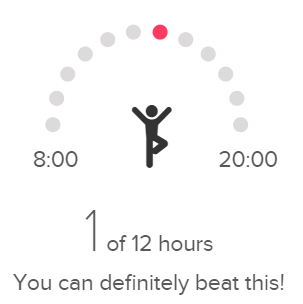
Sheesh.
So naturally, I walked to work today. I'm already at 9,770 and heading towards 20k (assuming I walk home, too).
At the Bristol Renaissance Faire yesterday I caught my friend Megan trying on earrings:
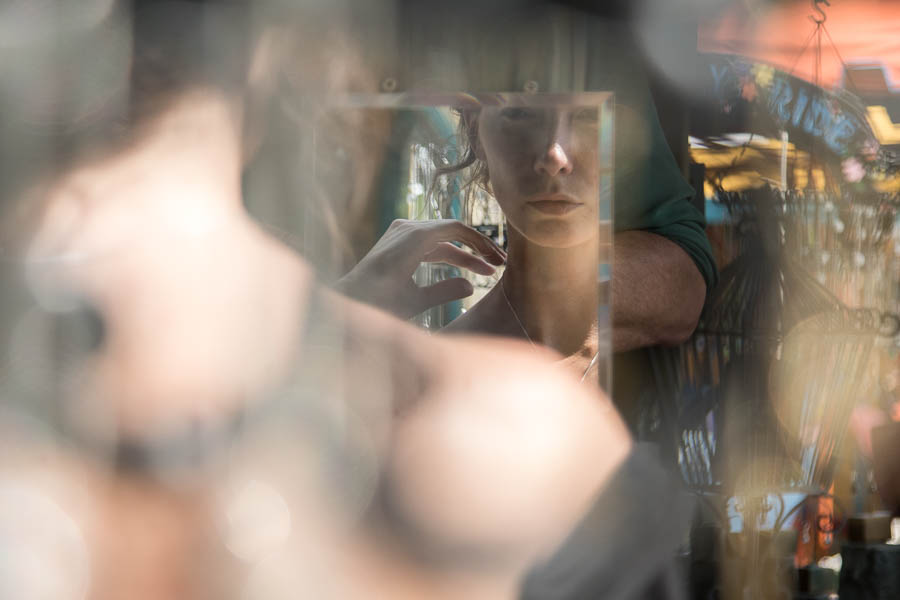
Today, though, I'm getting on this gorgeous machine and flying to the Ancestral Homeland:
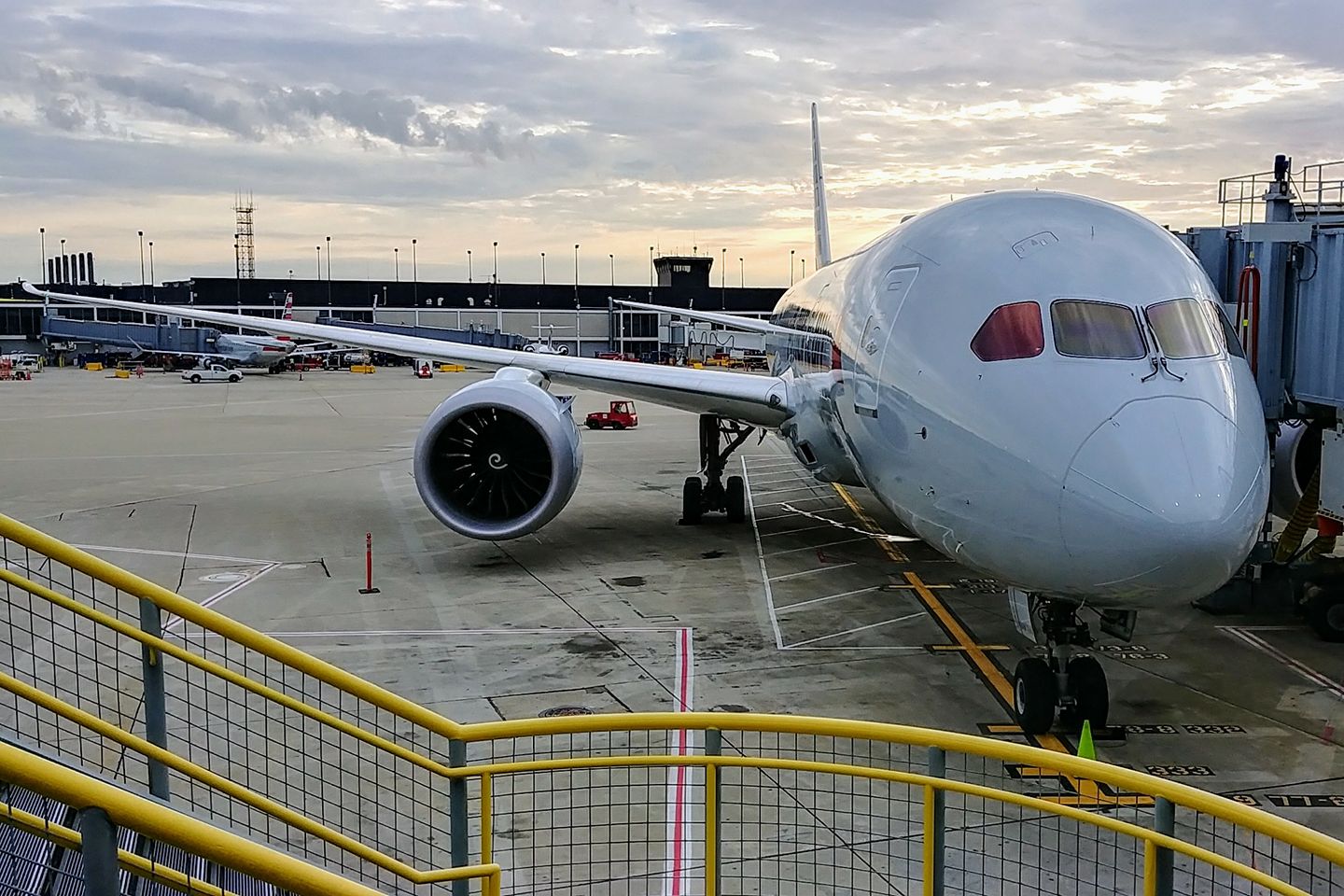
I'm also operating on about 4 hours of sleep, since my plan to wake up at 10:30am British Summer Time (4:30am Central Daylight Time) worked a lot better than my plan to go to sleep around 3am BST (9pm CDT). For that I thank the squad of Irish bros across the alley who had one of the louder parties I've ever witnessed until...well, there were still stragglers on the porch when I took out my trash at 5am.
I did get upgraded today, however, so at some point over the next couple of days I'll have a photo or two of Amercian's B787-8 business class.